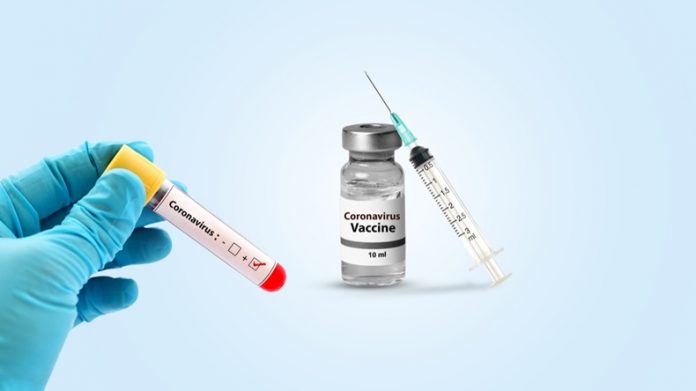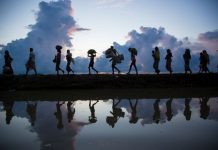This article is written by Rashmi Jha from Amity University, Mumbai. This article is regarding consequences and discussion about vaccine hesitancy.
Table of Contents
Introduction
In contrast to other drugs, vaccines are both individual and community-based. Although no vaccine is a hundred per cent effective, several diseases preventable by the use of vaccines can be eliminated, and some of those diseases can be eliminated only if widely used in communities. A high vaccine absorption rate, different for each vaccine-preventable disease, is required to achieve community-level immunity and reduce the risk of diseases above what vaccinal coverage alone would expect. There may even be clustered pockets or subgroups, where the rate of intake of vaccines is lower than needed to protect the community in countries with overall high national absorption rates. Over the last decade, the outbreaks and resurgences of these diseases have been linked with Measles, Mummy Berry, Haemophilus influenza B, Pertussis, and Polio in previously controlled countries.
At a meeting of the WHO Strategic Advisory Group of Experts on Immunization (SAGE) in 2011, the group noted with concern the effect of the refusal of vaccine uptakes in both developed and developing countries. They discussed hesitancy and the concern that was raised was that hesitancy has a negative impact on vaccine uptake rates. Several other issues had also been discussed, such as trust in vaccines (that is, vaccine safety), trust in healthcare workers, and confidence in those making vaccine approval decisions for a population that remain limited, covering only one category of factors influencing vaccination acceptance decisions, etc. These reports led SAGE to request a ‘Vaccine Hesitation Working Group’. The working group, while preparing a report on vaccine hesitancy, retained the term ‘vaccine’ rather than ‘vaccination’ hesitancy. It concluded that vaccine hesitancy on a continuum was insufficient because it neither defined nor implied the range of factors that influence hesitancy.
What is vaccine hesitancy and why is it important?
The term ‘vaccine hesitancy’ deals with absolute refusal of vaccination, the delay in use, acceptance of vaccines but their use is uncertain. Vaccination arguments are contradicted by an overwhelming scientific consensus on vaccine safety and effectiveness. Vaccine reluctance is viewed as one of the ten top global health hazards by the World Health Organization. The current COVID-19 pandemic, and subsequent development of several COVID-19 vaccines, have highlighted the urgent need to address vaccine hesitancy. Hesitation mainly arises from public discussions on vaccine-related medical, ethical and legal issues. Hesitancy in the vaccine stems from many key factors, which include lack of confidence of the individual (mistrust of the vaccine and/or the care provider), complacency (the need for vaccine or the value of the vaccine is not visible to the individual) and commodity (access to vaccines). The terms vaccine and vaccination have existed since their invention almost 80 years ago. Over time, the anti-vaccine supporters’ hypotheses have changed and the use of vaccines has increased. The hesitancy of the vaccine often leads to disease outbreaks and deaths from preventive diseases.
The working group (SAGE) concurred that hesitance happens when inoculated acknowledgement in specific areas is lower than anticipated, given the accessibility of immunization administrations and involvement with various geological departments. The purpose of the working group was that amidst safe and effective childhood immunizations, vaccine scepticism has emerged as a global issue that needs to be dealt with effectively. Vaccine hesitancy is, in this manner a conduct wonder which, given the accessible vaccination administrations, is quite surprisingly prevalent in today’s time. It is estimated on the assumption that it will achieve the specific immunisation inclusion objective. The working group agreed that, while vaccine tires may occur in situations where the absorption of vaccines is small, there may be several failures of a vacuum system:
- Deficiencies of vaccine inventories;
- Unfeasible journeys/distances to clinics;
- Missing communication with vaccine programmes;
- Vaccine-reduced services for disputes, natural disasters or incidents of conflict.
When vaccines are not received, individuals or communities are beyond the scope of the working group definition of vaccine hesitation and thus, estimates cannot be used as a trustworthy indicator of vaccine hesitation. If the main factor is lack of service, low consumption can cause doubt, but the first thing to think about would be a system failure that led to reduced vaccine access. In addition, the system failure is limited.
The vaccine hesitancy emerges on a spectrum between high vaccine demand and complete vaccine refusal, that is, no demand for available and offered vaccines. However, demand and hesitancy are not entirely in sync. Individuals or communities may accept vaccination without reservation, but they may not demand vaccination or a specific vaccine. Likewise, a vaccine-hesitant community does not accept vaccines at the expected rate because of the availability of services and the availability of vaccines, which leads us to mean lower demand than expected. On a personal and community level, the hesitation of vaccinations undermines the responsibility for immunization both personally and in the community. The hesitation of vaccines is at the heart of behaviour resulting from a decision process that reflects a constellation of factors influencing the decision to accept some or all vaccines according to the recommended schedule.
Models of vaccine hesitancy – vaccine hesitancy determinants
To further refine the definition of vaccine hesitation, the working group evaluated several conceptual models for the understanding and grouping of vaccine-hesitant determinants. Complexity and global applicability models have been considered and reviewed. These factors were assessed and evaluated for their potential utility in informing the development, survey questions, and interventions on the global and national hesitation indicators. The revision of these models has reinforced the complexity of the vaccine and does not depend on a single set of factors. The ‘Complacency, Convenience, and Confidence’ (3Cs) model was intuitive and thus the easiest to grasp. Furthermore, a comprehensive workgroup matrix was developed that better captured the complexity of contextual, group, and group influences. In the 3C model, certainty is characterized as:
- Inadequacy and wellbeing of antibodies.
- Arrangement of conveyance, including the unwavering quality and ability of the wellbeing administrations and medical services experts.
- Strategy producers’ inspirations for choosing which immunizations are vital.
There is a risk of vaccine-preventable diseases being detected in lower cases and vaccination is not considered an appropriate preventive action. The pleasure of a vaccine, in general, is influenced by many factors, such as other life/health responsibilities at this point that may be considered more important. Paradoxically, the success of the immunization program may result in complacency, and ultimately hesitation because people weigh the vaccine risks from uncommon diseases.
The degree to which self-efficacy is determined by hesitancy is also affected by self-perceiving and the ability of an individual to take action to vaccinate themselves. The convenience of vaccines is measured in terms of physical readiness, affordability and readiness to pay, geographical availability, capacity to understand (linguist and literate health), and the impact on the ability to use immunization services.
The quality of the service (true and/or perceived), and the degree to which immunization is provided at a given moment and in a convenient and comfortable cultural environment, also influence the choice of vaccine and may result in vaccine hesitancy. Reasons behind vaccine hesitancy are complex and encompass more than just a knowledge deficit.
The working group focused on various ways that are in progress, since the delay on immunization is a complicated issue, and setting explicit time, place and the antibodies change with a heap of conceivable hidden determinants is another thing to work upon. Even though there are best practices to address the faltering, more exploration is required. The deliberate survey and audit of mediation methodologies featured certain successful systems, albeit not all identified with wavering, for improving immunization take-up. While further work is needed, immunization programs must integrate vaccine-friendly programs and resources into their programs. Since vaccine programs must establish close ties with civil society organizations, they can help to foster vaccine support, increase demand for vaccines, and to tackle vaccine reactions based on the hesitancy factors underlying the vaccine.
Effects of vaccine hesitancy and refusal phenomenon
According to the World Health Organization, in the past ten years, about one-fifth of the world’s children have not received routine life-saving vaccinations, and 1.5 million children have died from vaccine-preventable diseases. However, despite this appalling data, some European countries and the United States are still generally reluctant to adopt the recommended national vaccination plan.
The dynamic anti-vaccine campaign mainly carried out through self-cited blogs, forums, and frequent reports of uncontrolled or misunderstood scientific evidence has led to a decline in immunization coverage in some communities.
A 2008 survey showed that 20% of parents from EU countries expressed doubts about their children being vaccinated. The decline in vaccination rates in several European countries and the United States may have led to the outbreaks of various vaccine-preventable diseases observed in recent years; for example, in the past five years, several countries in the European Union, including Belgium, Bulgaria, France, and Italy Russia, Romania, Spain, and most recently Germany, have reported an increase in Measles and Rubella epidemics; in addition, according to the European Commission’s Ministry of Health, EU countries have achieved the 95% coverage target.
Two doses of Measles vaccine, more than 667 measles cases were reported in July, 2014 and July 2015. The situation in the United States is the same. In the United States, low vaccination rates are considered to be the cause of multiple vaccine-preventable disease outbreaks, such as measles in California in 2014 and 2015. Most of the infected people were either not vaccinated and whosoever is vaccinated, their vaccination status is not shown.
Measuring delays in vaccination is essential for proper planning and tracking of strategies to increase vaccination coverage. It is also important to pay attention to the degree and type of fluctuations, as they may change temporarily. In addition, vaccine variants may be specific to one or more, but not all, vaccines. Determining vaccination coverage is not a reliable tool for measuring vaccine turnover, as it may be related to access issues. In addition, high vaccination coverage does not necessarily mean timely vaccination. Refusal of vaccination can be measured with tools such as the Vaccination Confidence Scale. Experts in the field recognize the continuity between vaccine acceptance and vaccine withdrawal. Uncertainty and rejection are closely related to suspicion of vaccination.
Political and social aspects
The vaccination decision needs to be understood in a broader socio-cultural context. Vaccination is part of the ‘broader social world’, which means that various factors (medical service experience, family history, sense of control, talking with friends, etc.) will affect vaccination decisions. HobsonWest emphasized – “Vaccination is just one of the many choices that parents face”.
Other daily issues regarding children’s health and nutrition may at some point be prioritized or affect the willingness to vaccinate. Strickland and colleagues use the ‘local vaccine culture’ one to describe how they share – ‘convictions about the cause of disease, the effectiveness and effectiveness of modern medicine, and views on the necessity of preventive measures and ‘local health services and vaccination’.
In a real postmodern environment that questioned the legitimacy of science, experience, and medical authority, it is not surprising that more and more people question the relevance of vaccination. It may be due to the emphasis on lifestyle and personal measures to promote health, as well as the rise of healthcare consumerism, which means that patients participate in their own health decisions. The emergence of informed patients has changed the traditional place of power. Doctors act as sole proprietorship and patient care leaders, with collaborative decision-making by health professionals and patients who want to actively participate in their health decision-making process.
In addition, vaccination has caused a lot of controversy and fears about vaccination since its formation. These controversies have affected the adoption of vaccines in varying degrees and often appear in specific contexts. For example, the link between the Hepatitis B vaccine and France’s multiple sclerosis has led to the suspension of the general vaccination program. In the 1990s, many studies did not find any evidence of this connection. Some of these vaccination threats have crossed national borders. The recent and well-known is the fraudulent link between the MMR vaccine and Autism. This link first spread widely in the UK but then quickly spread all over the world. Today, fear of autism is still a vaccine safety issue, and parents often report it in various situations. There are as many reasons for hesitation as background, and we assume there are some factors. The public has played a key role in the apparent growth of this phenomenon in developed countries.
How can India combat vaccine hesitancy?
In India, complacency is a major contributor to vaccine hesitancy. With the restrictions lifted, most people feel that the worst is over. However, they fail to take into account that the Spanish flu has devastated the world for over two to three years. COVID-19 has seen waves of ups and downs in the US, Europe, and the Middle East. The Indian Council of Medical Research has warned that India could face further waves in the coming months.
Recent serological epidemiological data show that approximately 80% of the Indian population is still at risk. Several variants of the virus have emerged. The infectivity of B.1.1.7 UK is about 50% higher. It has been found in more than 70 countries around the world. The B.1.351 line that appeared in South Africa in December reduced the effectiveness of some vaccines, accounting for 90% of cases there. Researched variants that may be imported from other countries.
With the current level of vaccination, it will take another two to three years for everyone to be vaccinated. Only through natural infection or vaccination to form herd immunity on a global scale can it be possible to get rid of the pandemic. This infection will continue to pose a threat to the rest of the world. Several countries have tried to prevent and restrict cross-border movement to curb the spread of the virus, but so far have had little success. If the virus mutates, resistance to the vaccine is most likely to appear. If we do not prevent the virus from spreading around the world, infectious or virulent strains will plunge us into a vicious circle.
Conclusion
To break the chain of COVID-19 transmission and eliminate the pandemic, mass vaccination is the only solution. The current vaccination campaign should be strengthened. This can be done on several levels. First of all, everyone who is vaccinated should receive a badge marked “I am protected” to highlight their identity. The vaccinated frontline fighters will receive gifts, which has been happening in the United States and the United Kingdom for several months. We can imitate the Brazilian rap star MC Fioti, who recorded a song called “Vacina Butantan”, which swept the country as a hymn to vaccines. Emphasis on the importance of protection is a must. Print, electronic, and social media must be used to highlight the need to turn vaccination hesitation into vaccination envy.
References
- https://www.mendeley.com/catalogue/32b6ab61-7f3a-3767-9487-f40dc6b23cb0/.
- https://pharmaceutical-journal.com/article/ld/how-to-address-vaccine-hesitancy.
- https://www.ncbi.nlm.nih.gov/pmc/articles/PMC6515949/.
- REPORT OF THE SAGE WORKING GROUP ON VACCINE HESITANCY
- Vaccine hesitancy: Definition, scope, and determinants
- How to address vaccine hesitancy
- Addressing vaccine hesitancy
LawSikho has created a telegram group for exchanging legal knowledge, referrals, and various opportunities. You can click on this link and join:













